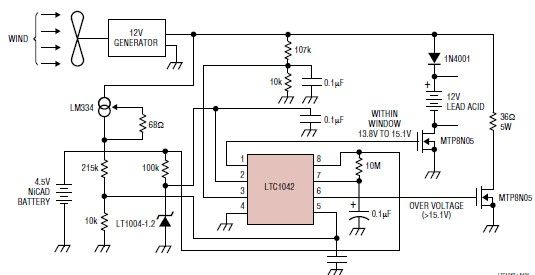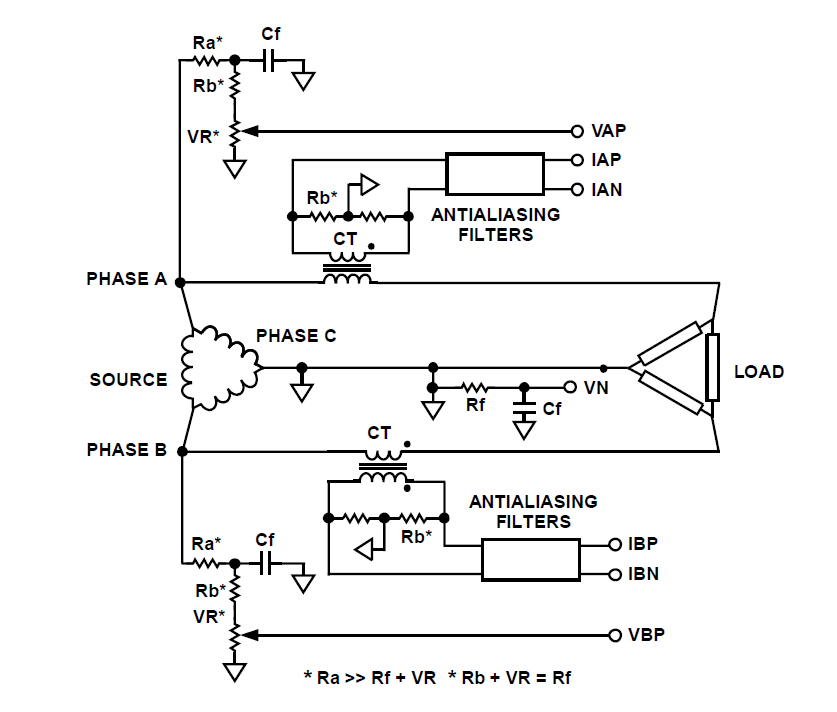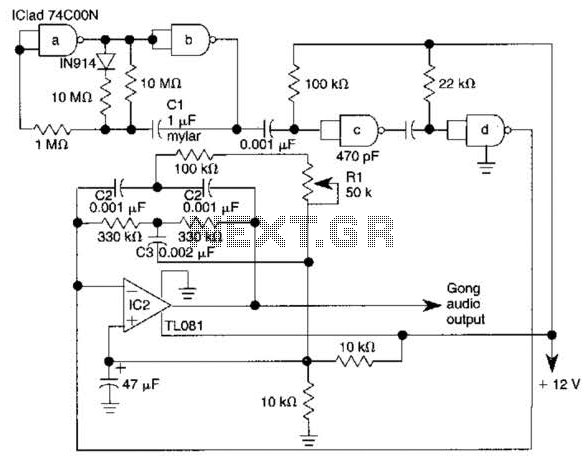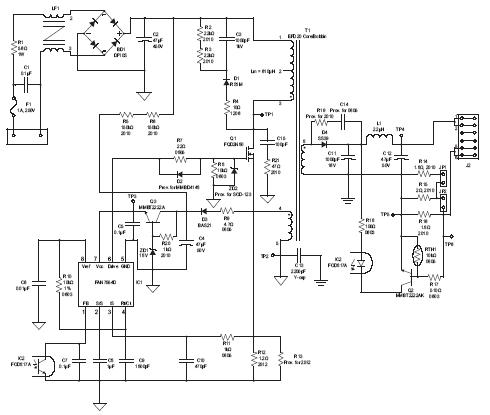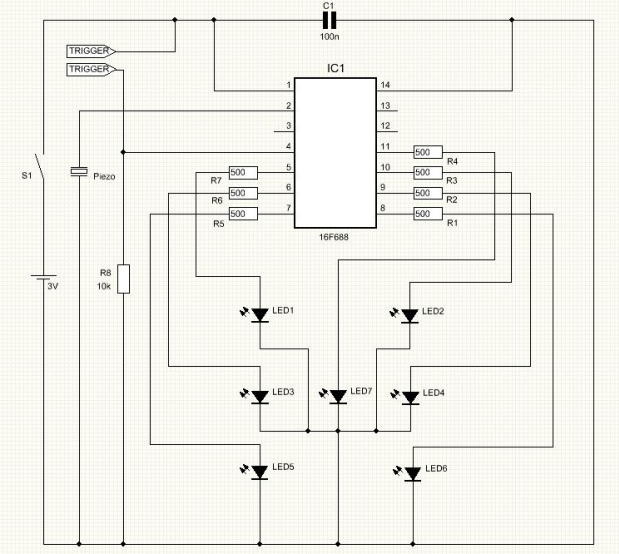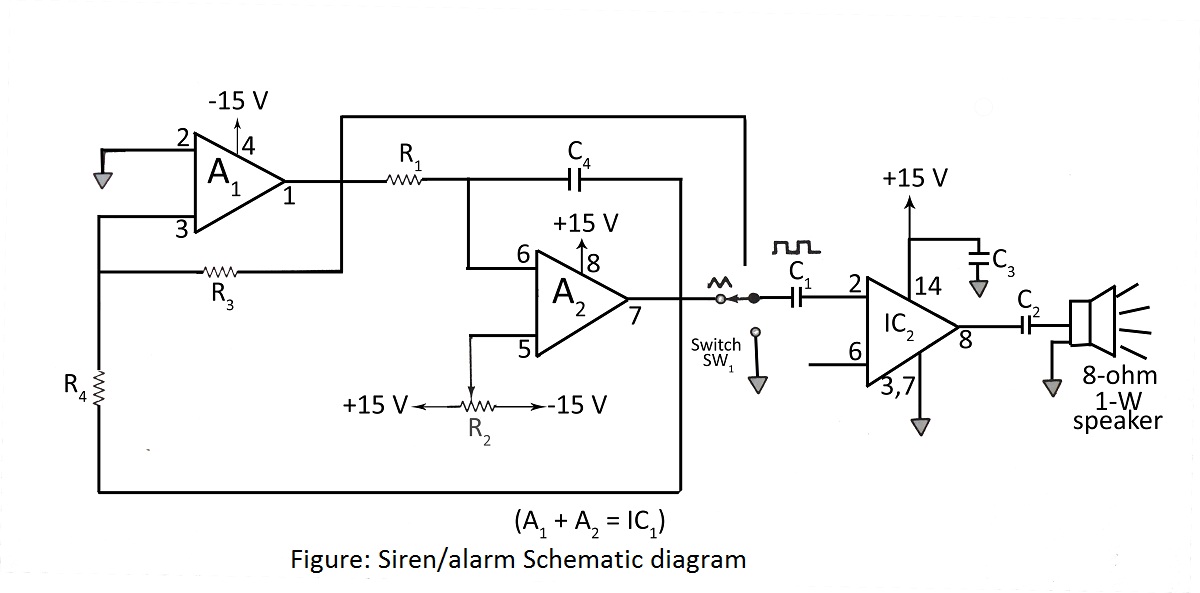
nicd battery charger using common electronic components
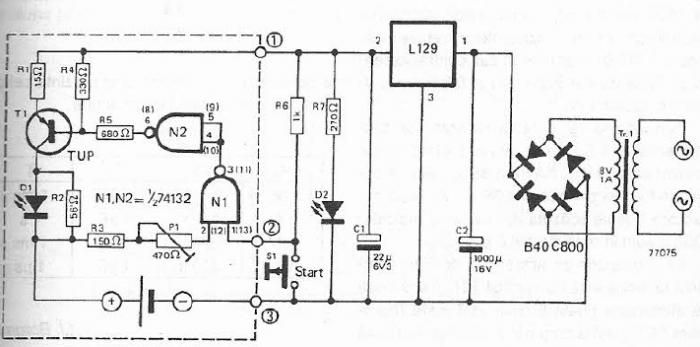
The maximum charge voltage is set at 1.45 volts, while the higher trigger threshold is approximately 1.7 volts. This voltage can be adjusted using potentiometer P1 to reach 1.45 volts. A TTL control signal is output by the voltage divider formed by resistors R4 and R5, and a constant current source is created using transistor T1, which delivers a current of about 48 mA. The illumination of diode D1 indicates that the battery is charging. Once the battery voltage reaches a maximum load of 1.15 volts, the Schmitt trigger activates, causing D1 to turn off, signaling that charging is complete. The lower trigger threshold is around 0.9 volts, necessitating the manual initiation of each charging cycle by pressing switch S1. For 1.2V/1500mAh batteries charged at a current of 150 mA, resistor R1 should be 5.6 ohms, R2 should be 12 ohms, and transistor T1 should be a 2N2904.
The circuit described operates as a battery charger with specific voltage and current regulation features. The maximum charge voltage of 1.45 volts is crucial for ensuring that the battery does not exceed its safe charging limit. The use of potentiometer P1 allows for fine-tuning of the charge voltage, accommodating variations in battery characteristics or user preferences.
The voltage divider comprising resistors R4 and R5 serves to produce a TTL-level control signal that manages the operation of the charging circuit. This signal is essential for the functioning of the Schmitt trigger, which provides hysteresis, ensuring stable operation during the charging process. The constant current source, established with transistor T1, is responsible for delivering a steady current of approximately 48 mA to the battery, facilitating efficient charging.
Diode D1 serves as an indicator for the charging status; its illumination signifies that the battery is actively being charged. Once the battery voltage reaches 1.15 volts, the Schmitt trigger's action causes D1 to turn off, indicating that the battery is fully charged and the charging process should cease to prevent overcharging.
The lower trigger threshold of 0.9 volts is a critical parameter, as it ensures that the charging cycle can only commence when the battery voltage is sufficiently low. The requirement to press switch S1 to initiate each charging cycle adds a layer of user control, preventing unintended charging.
For optimal performance with 1.2V/1500mAh batteries, the specified resistor values (R1 at 5.6 ohms and R2 at 12 ohms) and the choice of transistor (2N2904) are essential for achieving the desired charging current of 150 mA. These components must be selected and configured correctly to ensure reliable operation of the charging circuit. Overall, the design is tailored to provide a safe and efficient charging solution for compatible battery types.Since the maximum charge voltage measures 1. 45 volts and higher trigger threshold is about 1. 7 V, this voltage can be adjusted using potentiometer P1 to the value of 1. 45 volts. TTL control signal output by the voltage divider R4/R5, constant current source built with transistor T1, which provides a current of about 48mA. If D1 illuminates, it mea ns that the battery voltage is charged. If maximum load of 1. 15 volts is reached, the Schmitt trigger swings, D1 turns off (charging is completed). Since the lower trigger threshold is about 0. 9 volts, every charging cycle must be started by pushing S1 switch. For 1. 2v/1500mAh batteries which are charged with a current of 150mA, R1 must be 5. 6 ohms, R2 = 12 ohms, T1 = 2N2904. 🔗 External reference
The circuit described operates as a battery charger with specific voltage and current regulation features. The maximum charge voltage of 1.45 volts is crucial for ensuring that the battery does not exceed its safe charging limit. The use of potentiometer P1 allows for fine-tuning of the charge voltage, accommodating variations in battery characteristics or user preferences.
The voltage divider comprising resistors R4 and R5 serves to produce a TTL-level control signal that manages the operation of the charging circuit. This signal is essential for the functioning of the Schmitt trigger, which provides hysteresis, ensuring stable operation during the charging process. The constant current source, established with transistor T1, is responsible for delivering a steady current of approximately 48 mA to the battery, facilitating efficient charging.
Diode D1 serves as an indicator for the charging status; its illumination signifies that the battery is actively being charged. Once the battery voltage reaches 1.15 volts, the Schmitt trigger's action causes D1 to turn off, indicating that the battery is fully charged and the charging process should cease to prevent overcharging.
The lower trigger threshold of 0.9 volts is a critical parameter, as it ensures that the charging cycle can only commence when the battery voltage is sufficiently low. The requirement to press switch S1 to initiate each charging cycle adds a layer of user control, preventing unintended charging.
For optimal performance with 1.2V/1500mAh batteries, the specified resistor values (R1 at 5.6 ohms and R2 at 12 ohms) and the choice of transistor (2N2904) are essential for achieving the desired charging current of 150 mA. These components must be selected and configured correctly to ensure reliable operation of the charging circuit. Overall, the design is tailored to provide a safe and efficient charging solution for compatible battery types.Since the maximum charge voltage measures 1. 45 volts and higher trigger threshold is about 1. 7 V, this voltage can be adjusted using potentiometer P1 to the value of 1. 45 volts. TTL control signal output by the voltage divider R4/R5, constant current source built with transistor T1, which provides a current of about 48mA. If D1 illuminates, it mea ns that the battery voltage is charged. If maximum load of 1. 15 volts is reached, the Schmitt trigger swings, D1 turns off (charging is completed). Since the lower trigger threshold is about 0. 9 volts, every charging cycle must be started by pushing S1 switch. For 1. 2v/1500mAh batteries which are charged with a current of 150mA, R1 must be 5. 6 ohms, R2 = 12 ohms, T1 = 2N2904. 🔗 External reference
